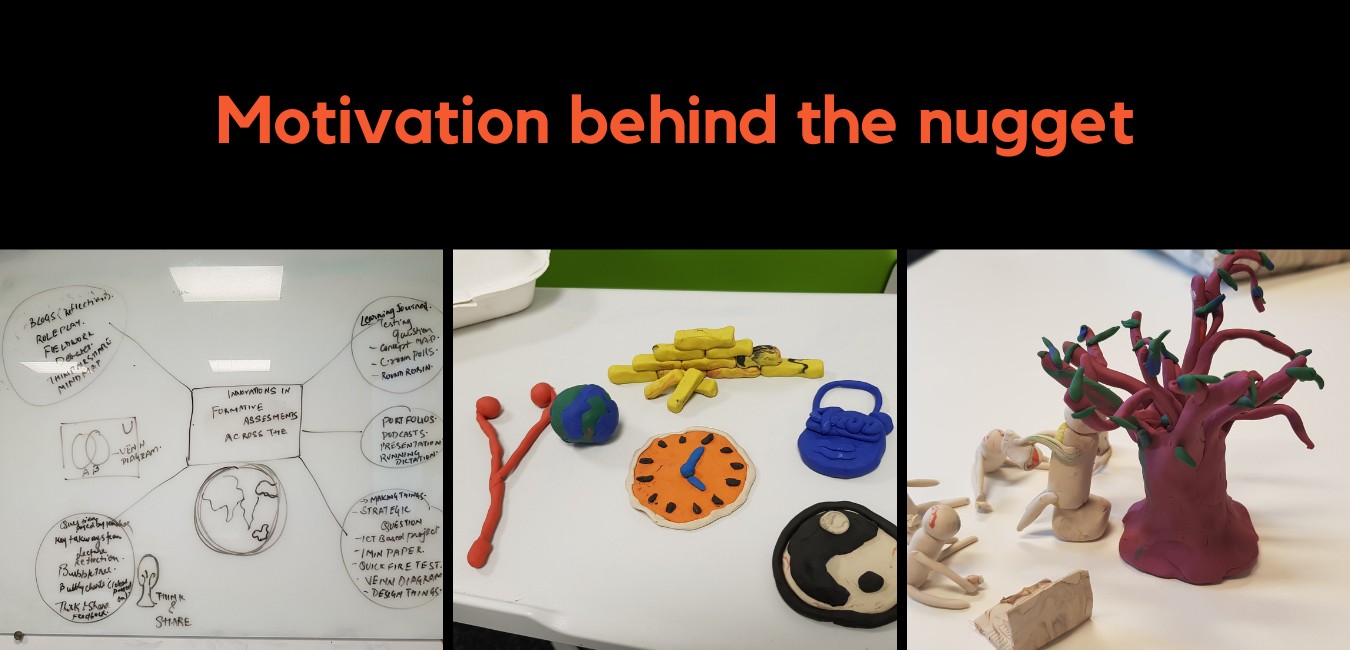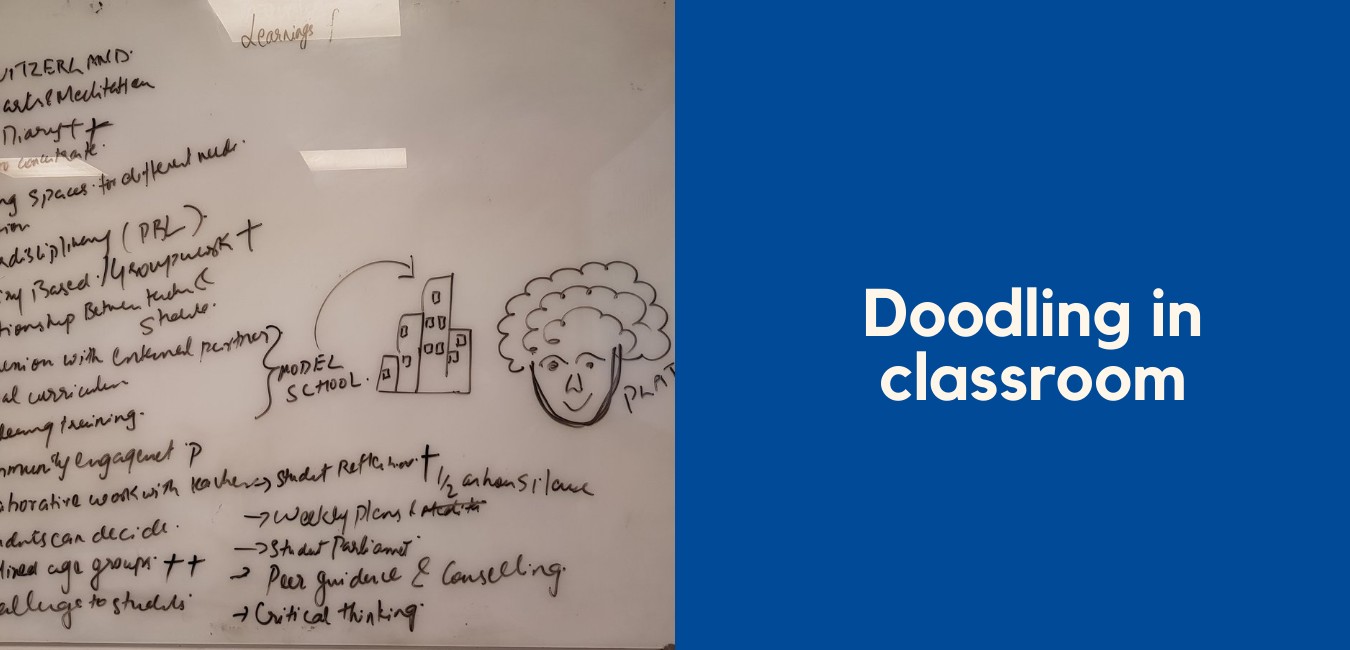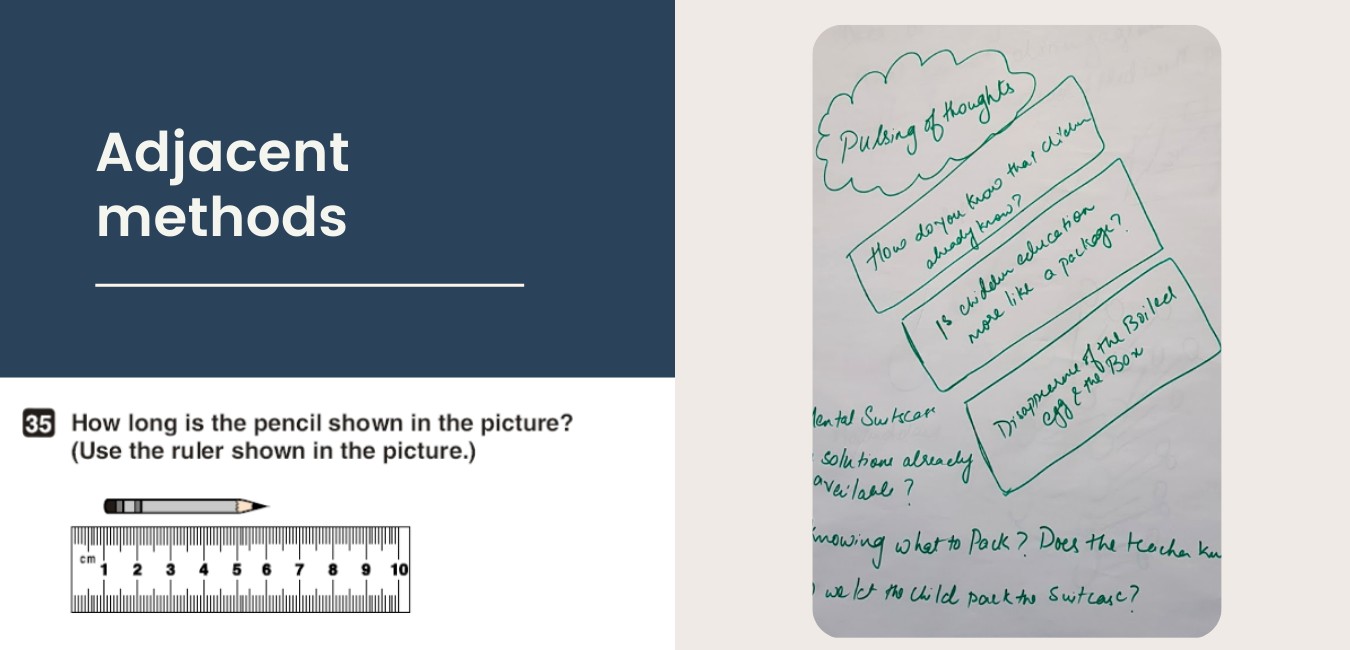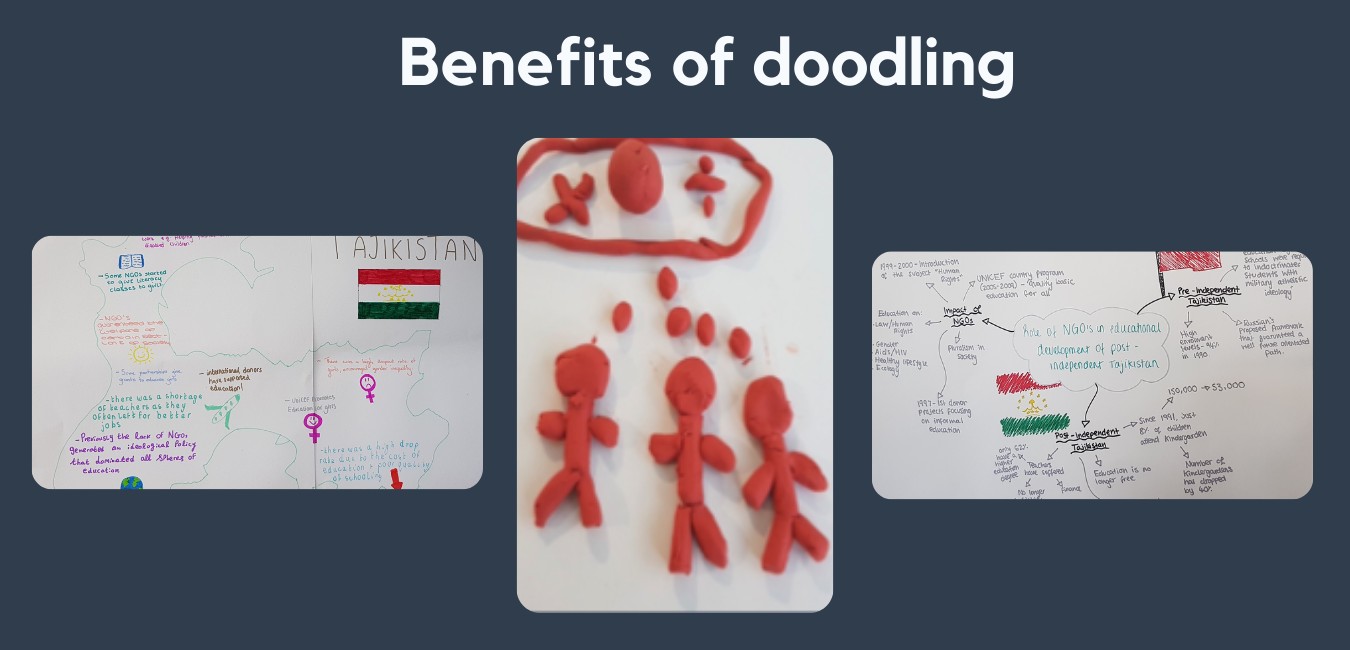Doodling and visual learning techniques
Doodling, creations, and mind mapping techniques in teaching and learning - Dr Gopal Iyer
01 April 2023

Motivation behind this contribution
The idea of putting this piece together came to my mind while I was looking back at the doodles and the visual images that I put together on boards while I was teaching and researching during my doctoral programme. I undertook a literature review to understand the impact of doodling on learners and found that, to an extent, it has the potential to modify their attitude, raise their attention and increase their engagement during classroom sessions (Ros, 2018).
Drawing caricatures on the board and visually presenting them to the students enabled me to assimilate the learning that took place during the classroom interactions. Secondly, by drawing figures on the board and representing their words in the form of speech bubbles or square boxes created an informal atmosphere in the classroom, encouraged students to speak their minds freely and have fun during the sessions.
Another primary motivation emerged when I discussed methods of recapitulating information with my colleagues and peers, who believed that visually articulating the message on the white board was a brilliant idea. However, I recognise that other specialists may have alternative perspectives on the benefits and drawbacks of the way I disseminated my thoughts during the teaching process.
Finally, watching doodles being drawn, or shapes and figures being drawn on the board helps students to be active while being in a passive set up such as a classroom. Intentional engagement and learners' sense of immersion increases due to the ‘tension between the desire for an activity and the need to be mentally present” - doodling helps students to ease that tension, allowing the student to focus on the lecture (Ros, 2018).

Doodling in classroom
Most published literature engages with the question of why participants, as opposed to facilitators, engage in doodling. For instance, literature review suggests that when lectures and sessions are not engaging enough, the bored state of mind wanders from the learning space and ends at the hand, resulting in doodling (Barron et al. 2011). To avert the mind from straying away during the learning process, as a facilitator I encourage doodling and visual learning in the classroom so that students can express themselves figuratively without any inhibitions.
A major aim to introduce doodling in teaching was to impart complex and multifaceted information through images. Doodling helps to synthesise large amounts of information into easily digestible, bite-sized and comprehensible forms, to sustain the curiosity, inquisitiveness and active participation of the learners in the classroom.
Another motivation to promote visual learning through doodles and figures in the classroom came from my experience of work with large scale consulting firms and corporations, where discussions and learning gravitated towards data and strategy. There was negligible or minimal emphasis on communicating ideas through visual mediums. While in academia, I challenged myself and aimed to improve upon the fallacies that I cultivated during my consulting life. Mundane ways of communicating ideas through excel spreadsheets and heavily textual reports bothered me. They did not reflect the creative pursuits of young people engaged in the learning process. Hence, I resorted to visual learning methods such as doodling, to transfer the learnings from my practice to my students as an academic professional.

Adjacent methods to Doodling
According to Brown (2014) several adjacent methods can sometimes be misconstrued as doodling:
Scribbling is defined as the process of drawing meaningful modes of representations, enabling students and educators to express their ideas (Udin, 2016, emphasis added). As an educator, I found scribbling to be a rewarding tool to assimilate students' ideas and display them on the whiteboard while teaching.
Sketching – Sketching can be described as quick, undefined drawing. Larkin and Simon (1987) consider sketching to be a medium that enables the cerebrum to capture ideas that are fluid in nature and constantly refine them. It was difficult to sketch out ideas in the classroom, given the fact that I had no background in fine or visual arts and hence, I did not have many opportunities to use the tool during the teaching and research process.
Drawing – Any piece of work that represents an object or form visually (Brown, 2014). Research indicates that when objects or forms are presented on the board figuratively, it promotes valuable insights into the thought processes of learners and helps them to assimilate their thinking in visual forms (Uddin, 2016). Through my research, early in my career, I could integrate the learnings in my academic lectures with the use of drawings and doodles.

Benefits of doodling
The use of this method extends beyond classroom and provides a space for students to think and behave differently.
Impacting cognitive processes
Brown (2014) mentions that doodling serves as an ‘anchoring task’, and complements well with another task. During my teaching, I have found that doodling in the classroom helped to reduce the tension that can result from a formal lecture set-up. Evidence suggests that when people visualise doodles or figures on board, it helps their concentration and allows them to think about different perspectives by letting their mind ‘wander’. Allowing doodling in the classroom and taking it up while teaching helps students to retain and recall information.
Effect on neural networks
At a personal level, I am aware that while teaching I find it comfortable to move and use my hands extensively to draw various shapes and figures on the board. To some extent, anecdotal evidence suggests that learners with long-term concentration issues are able to focus more when allowed to use materials or other widgets during classroom sessions (Ros, 2018).
Information comprehension
A simple visualisation used in a classroom is a powerful tool that is retained in the long-term memory, helping students comprehend the information presented (Brown, 2014). Students are inclined to put more effort into learning when they see pictures, visual images and enjoy engaging with the content as compared to just reading or memorising from written notes and texts (Edwards, 2011).
Immersive thinking
Visual learning methods such as doodling, building shapes and figures, drawing caricatures promote ‘creative, strategic and tactical thinking’ (Brown, 2014). Building shapes and figures helps to ignite various parts of the amygdala, leading to innovative thoughts. Hands-on activities with learners provided them with the immersive space and encouraged them to mull over intricate issues related to education and development.
Interdisciplinarity in using doodling and visual learning techniques
Challenges and critiques of visual learning and doodling techniques
Summary
As a teaching practice, putting visual drawings such as doodles and caricatures on the board and engaging learners in hands-on activities has been a rewarding and satisfying experience. The benefits of doodling, such as information assimilation, allowing diversified viewpoints, and cognitive growth may outweigh the element of disruption that comes along with this method (Ros, 2018). I intend to continue the practice in my classroom sessions and encourage my students to take up visual learning processes, as I perceive that there are no significant drawbacks to taking up doodling, drawing and scribbling practices in classrooms
Downloads
References & Bibliography



